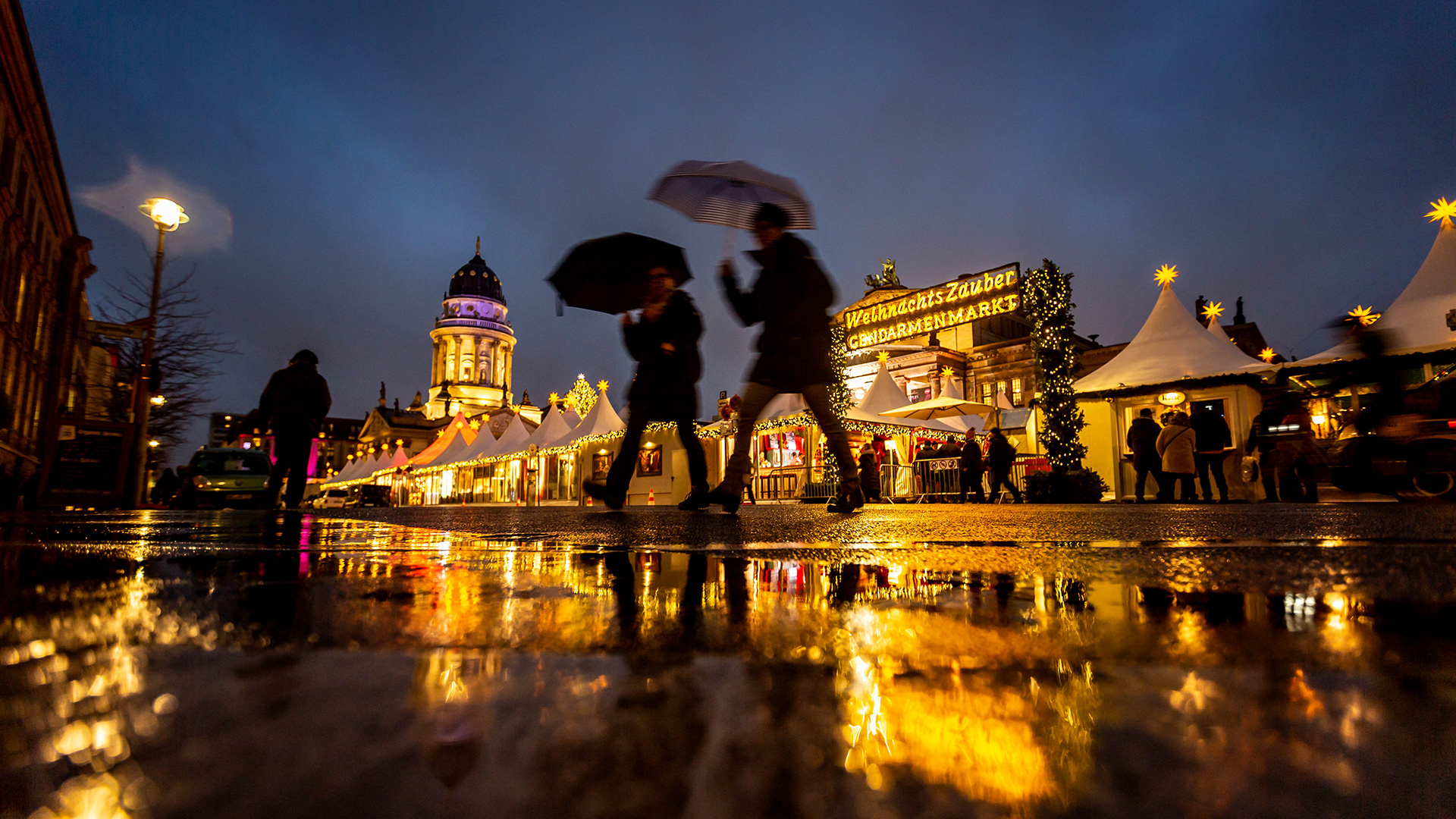
Editor’s Note: The glow of Christmas market lights illuminates town squares across Europe. Tragically, the public venues where tourists mingle with locals are an easy target for terrorists. Two years ago at a Christmas market in Berlin, a terrorist drove a truck into a crowd, killing twelve and wounding fifty-six people. And following last week’s attack on a market in Strasbourg, France, the Washington Post reported that “the markets have become targets for terrorism because they draw crowds and have ties to religion.” The religion in the crosshairs is Christianity. We grieve that there are still some who attempt to extinguish the good tidings of great joy intended for all people. We mourn with the victims’ families, pray for the Lord to comfort them, and long for the advent of the reign of the Prince of Peace when every tear will be wiped away.
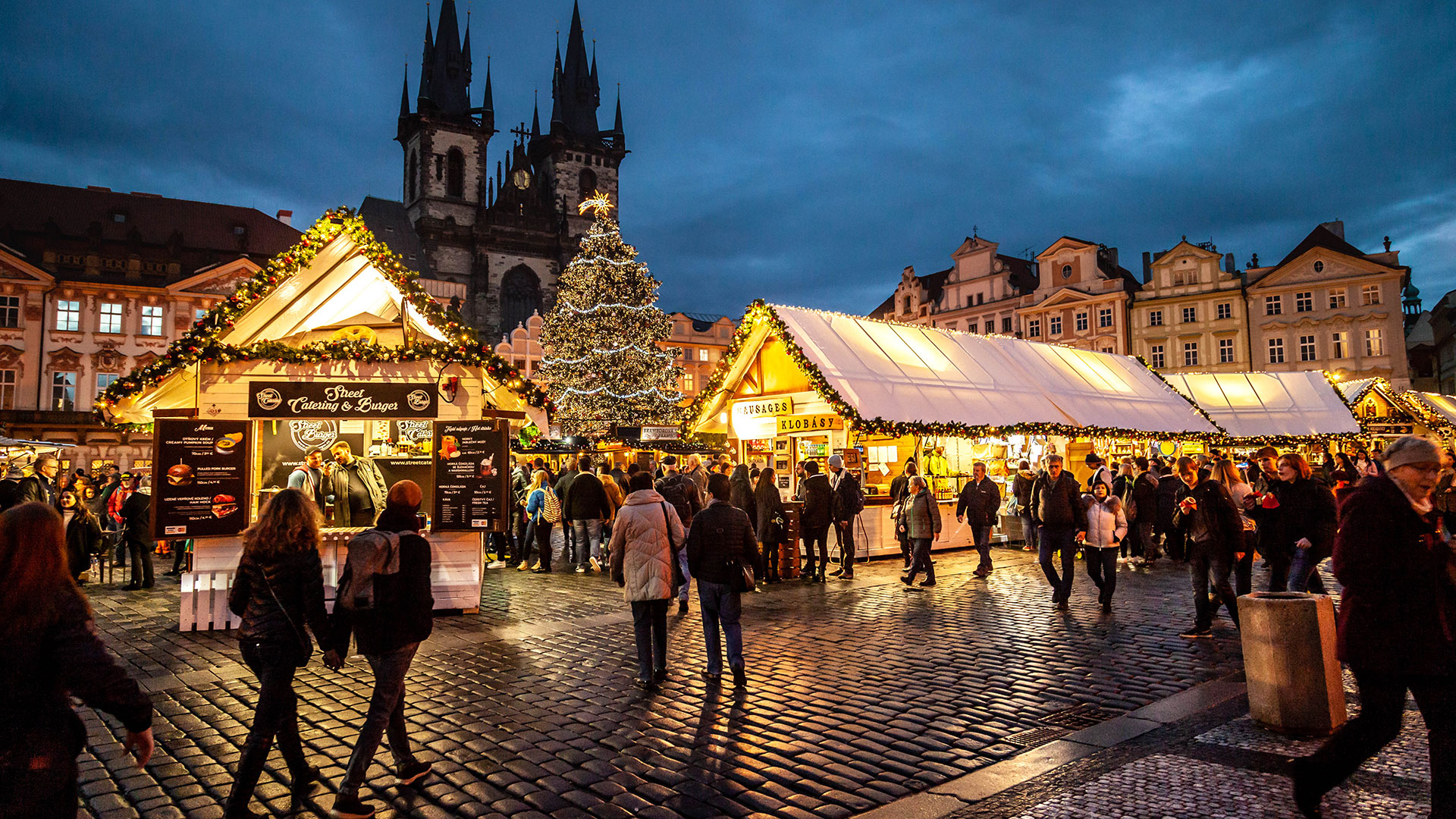
Prague’s Old Town Christmas Market in the Czech Republic is one of the most spectacular and visited markets in all of Europe. Photo by Patrick Royals.
Christmas overseas can be bittersweet. We’ve lived in Europe for four years, and our hearts still long for the holiday traditions we grew up with in America. We still request cans of pumpkin for pies and french-fried-onions to top the beloved green bean casserole that completes our makeshift Christmas feast.
We recently moved from London to a central European country, and the change was a bigger adjustment than we anticipated. Everything in our new country seems different. For example, my daughters and I went to a grocery store last night and found items that we would never see at Walmart or Target.
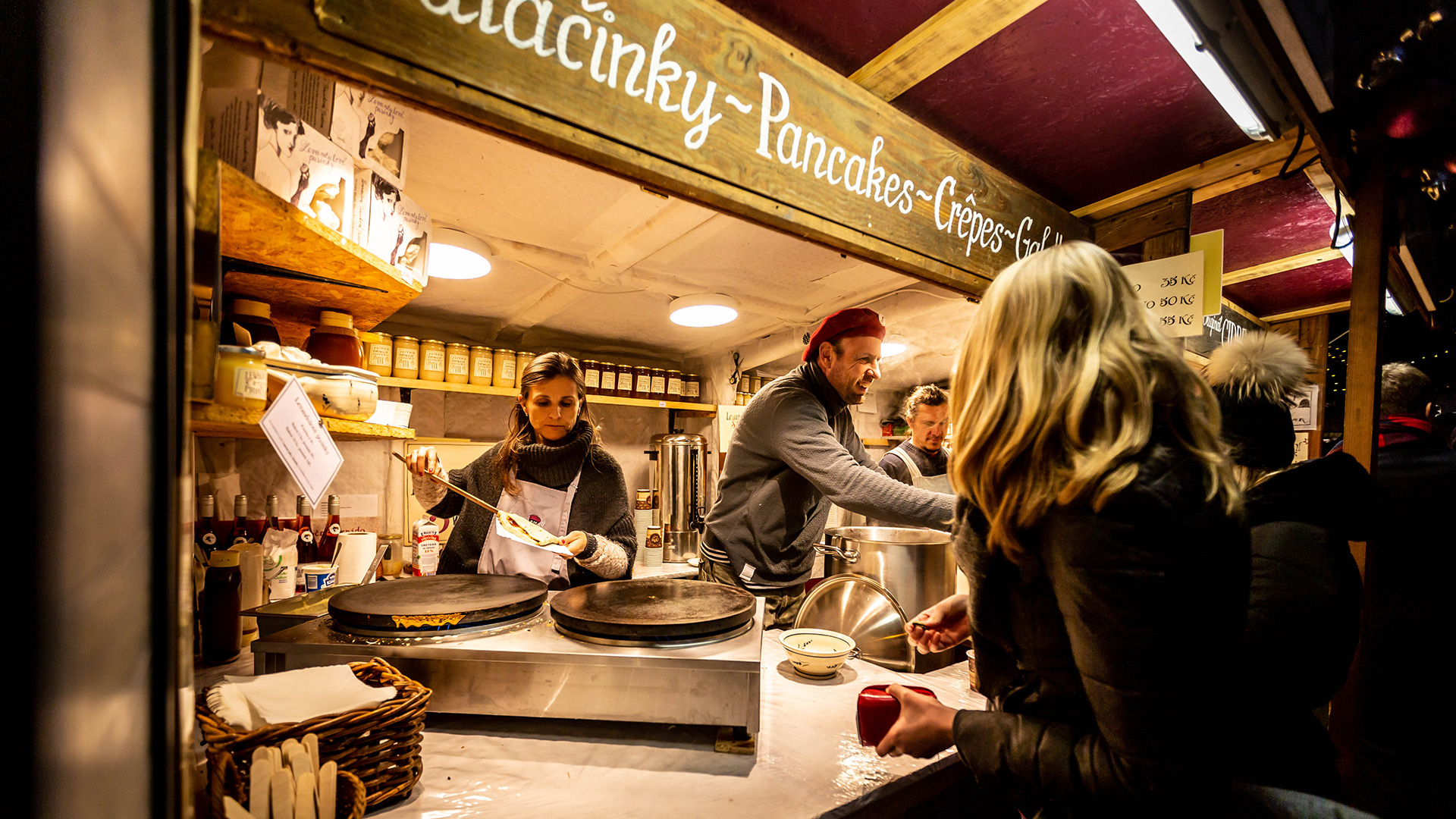
Customers buy warm, jam-filled palačinky from a stall at a Christmas market in the Czech Republic. Versions of this delicacy can be found in many European countries—French crepes, Russian blini, and Austrian palatschinken are all similar. Photo by Patrick Royals.
Next to the yogurt and cheese, we found goose and duck pâté (with a knife included for easy pâté-spreading), a glass jar holding an entire eel-like fish that was soaking in some sort of brine, and last, but not least, a gelatinous “food” item with carrot pieces, tomato chunks, and smoked meat suspended in a clear jelly.
Here, the differences between our two cultures can be jarring. Sometimes it’s easy to forget that we have anything in common with people who speak another language, act differently, and eat fish from a jar. But in the midst of feeling out of place, we have profound moments when we’re reminded that we’re surrounded by people that God loves and with whom he longs to have a relationship. I recently had one of those moments as we walked through a local Christmas market.
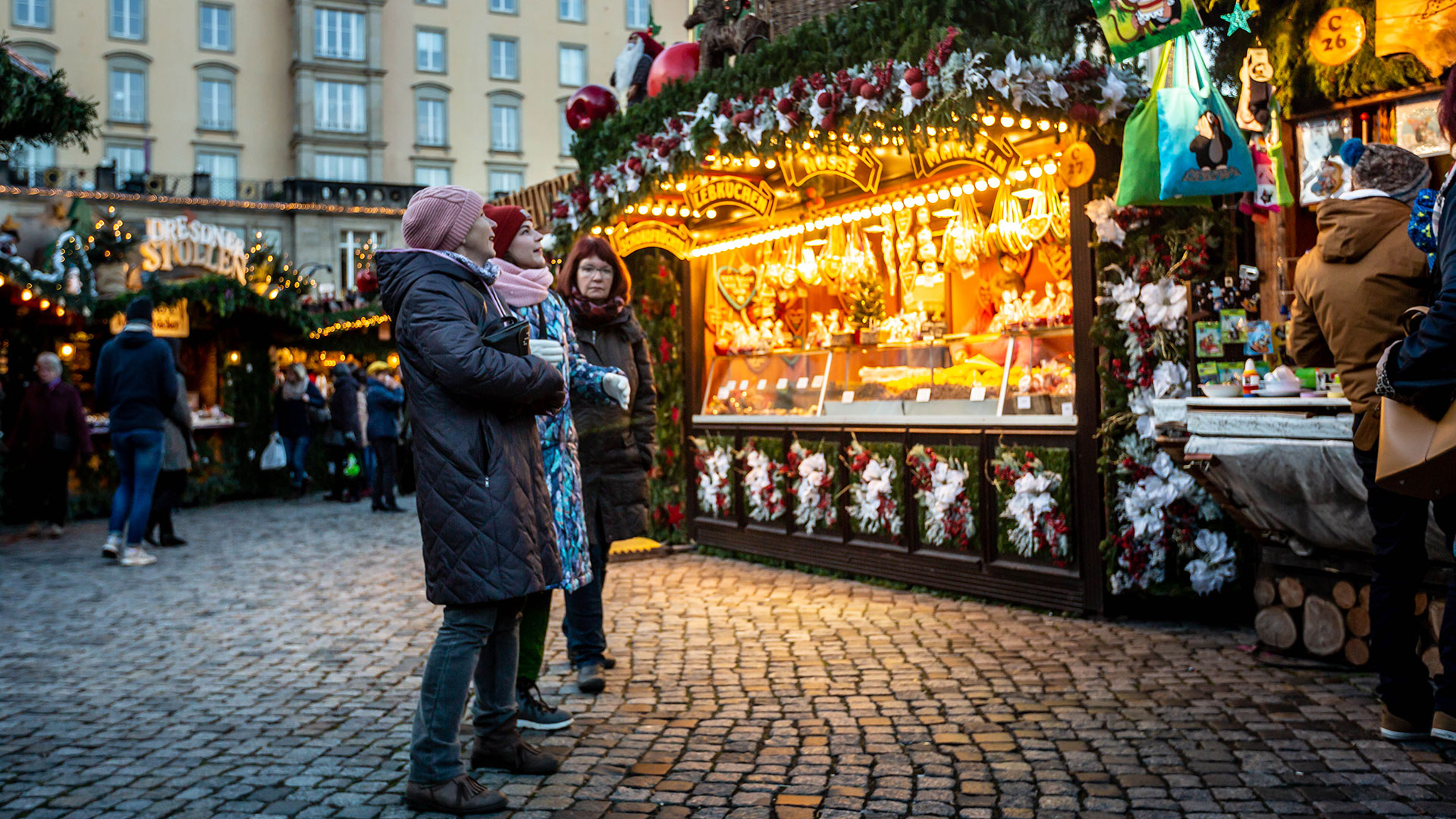
Cold temperatures don’t deter visitors who are delighted by the offerings at a stand at the Striezelmarkt Christmas market in Dresden, Germany. Photo by Patrick Royals.
It’s Beginning to Look a Lot Like Christmas
Christmas markets date back to the Middle Ages and have been a tradition in Europe ever since. It’s estimated that eighty-five million people visit European Christmas markets each year. Many of those who visit the markets are European and likely hold to a postmodern worldview. You can read more about postmodernism here, but the gist is, postmodernists equate stories about Jesus with fairytales. But despite the prevalence of postmodern skepticism, Christmas celebrations and Christmas markets still have a strong presence in European culture.
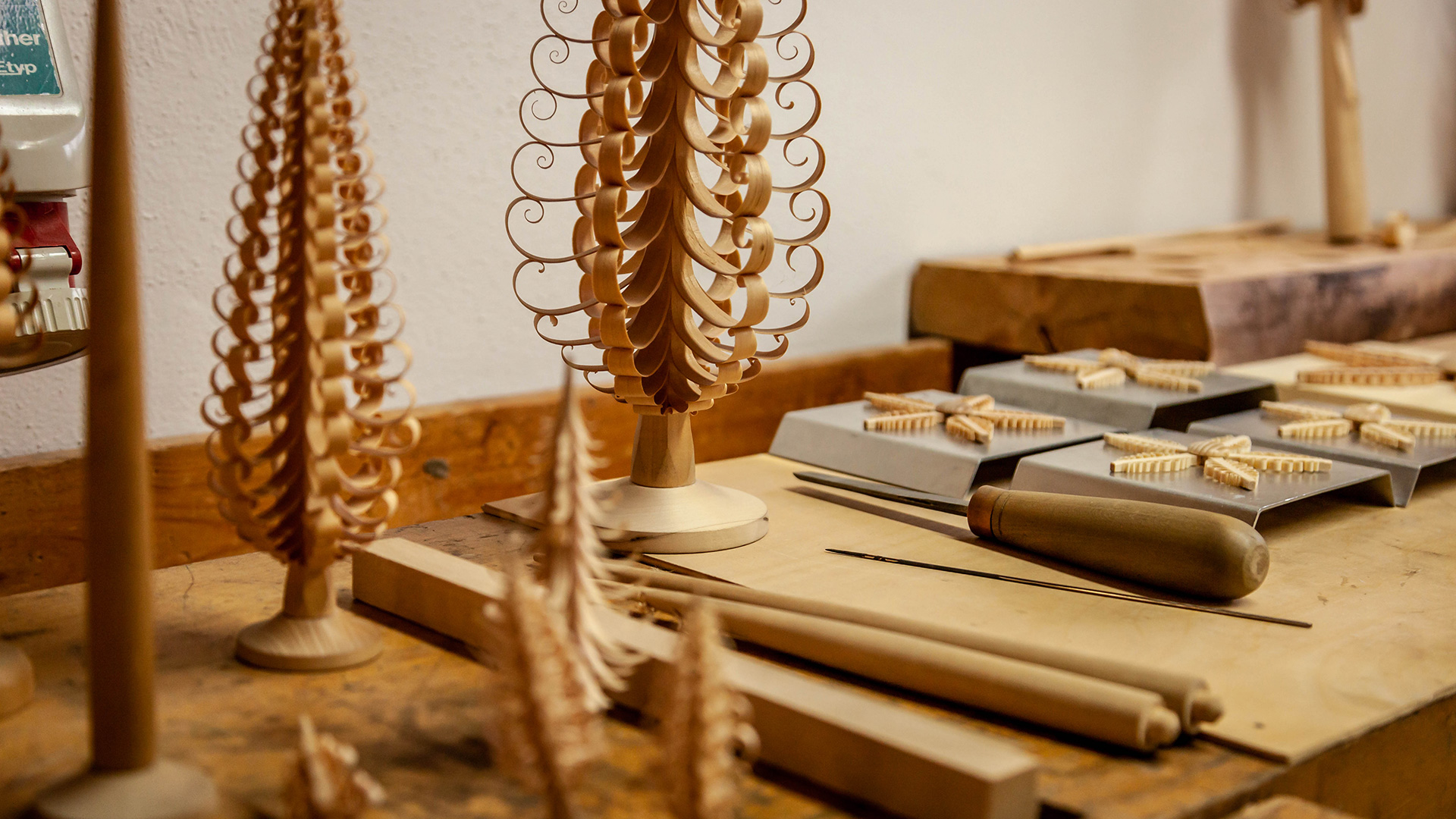
A workman’s table with the chisel used to create the delicate limbs of the pyramid column trees, or Spanbäume, in an Erzgebirge woodworking workshop in Seiffen, Germany. Photo by Patrick Royals.
Walking through a market is like walking through the best Christmas movie. With cobblestones under your feet, you browse wooden stalls covered in white lights that shine bright against the dark sky.
Since it gets dark at 4:30 p.m. and earlier in the day the sky is usually cloudy, the lights are always shining. Each stall sells things like cozy scarves, hand-carved nativity sets, local honey, glass ornaments, and wreaths made from real pine. As you browse, you catch the smell of cinnamon, wood-burning fires, and mulled wine, and you hear the faint sound of traditional Christmas carols played by wood flutes or sung by children’s choirs.
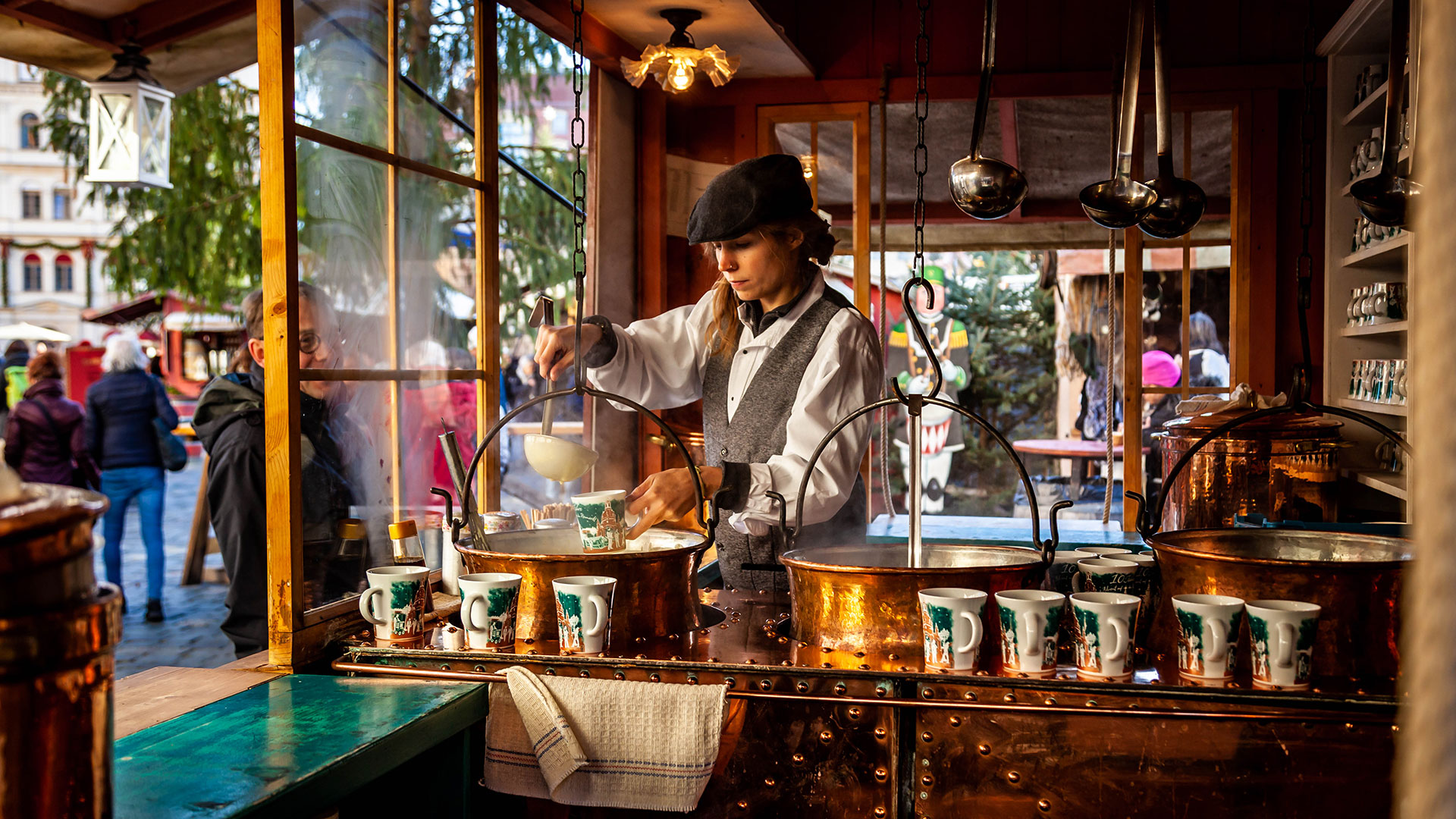
Warm alcoholic drinks like Glüwein, a hot, spicy mulled wine, are popular at any European Christmas market. The woman pictured here is serving a thick eggnog-like drink. Photo by Patrick Royals.
I’ll Be Home for Christmas (If Only in My Dreams)
The beauty of Christmas markets is stunning, but what I found most impressive during my trip to the market was the sense of community I felt walking among the other shoppers. I began to see how this culture, that often seems so different, is actually similar to my own.
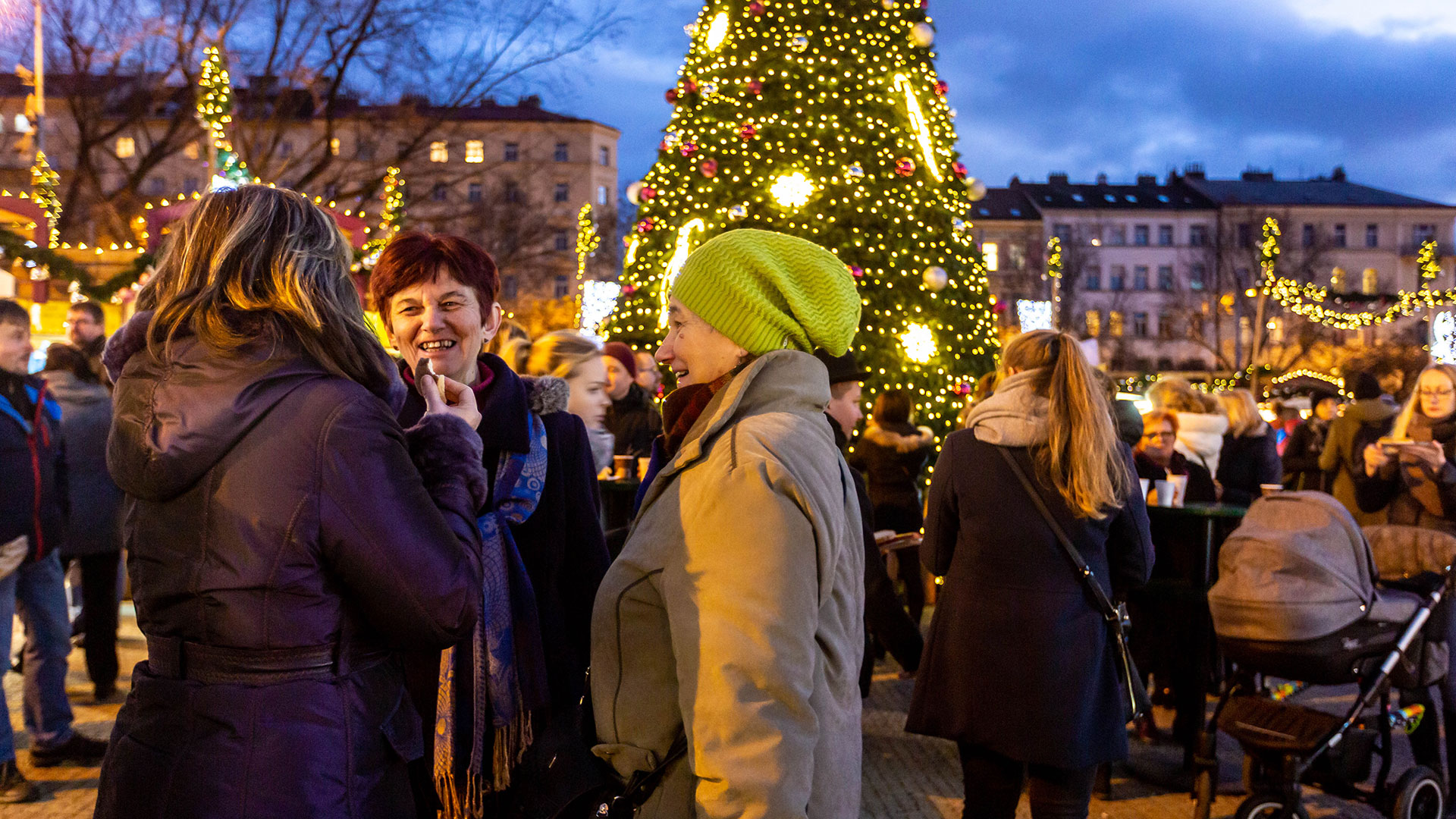
The joy of the holiday is palpable at Christmas markets when friends meet to savor the flavors of the season. Photo by Patrick Royals.
I saw my niece and nephew reflected in the eyes of European children as they looked longingly at the stalls that sell cookies elaborately decorated with icing. As I watched grandparents in the market fret over which pair of gloves to get their grandchildren, I imagined my own grandparents.
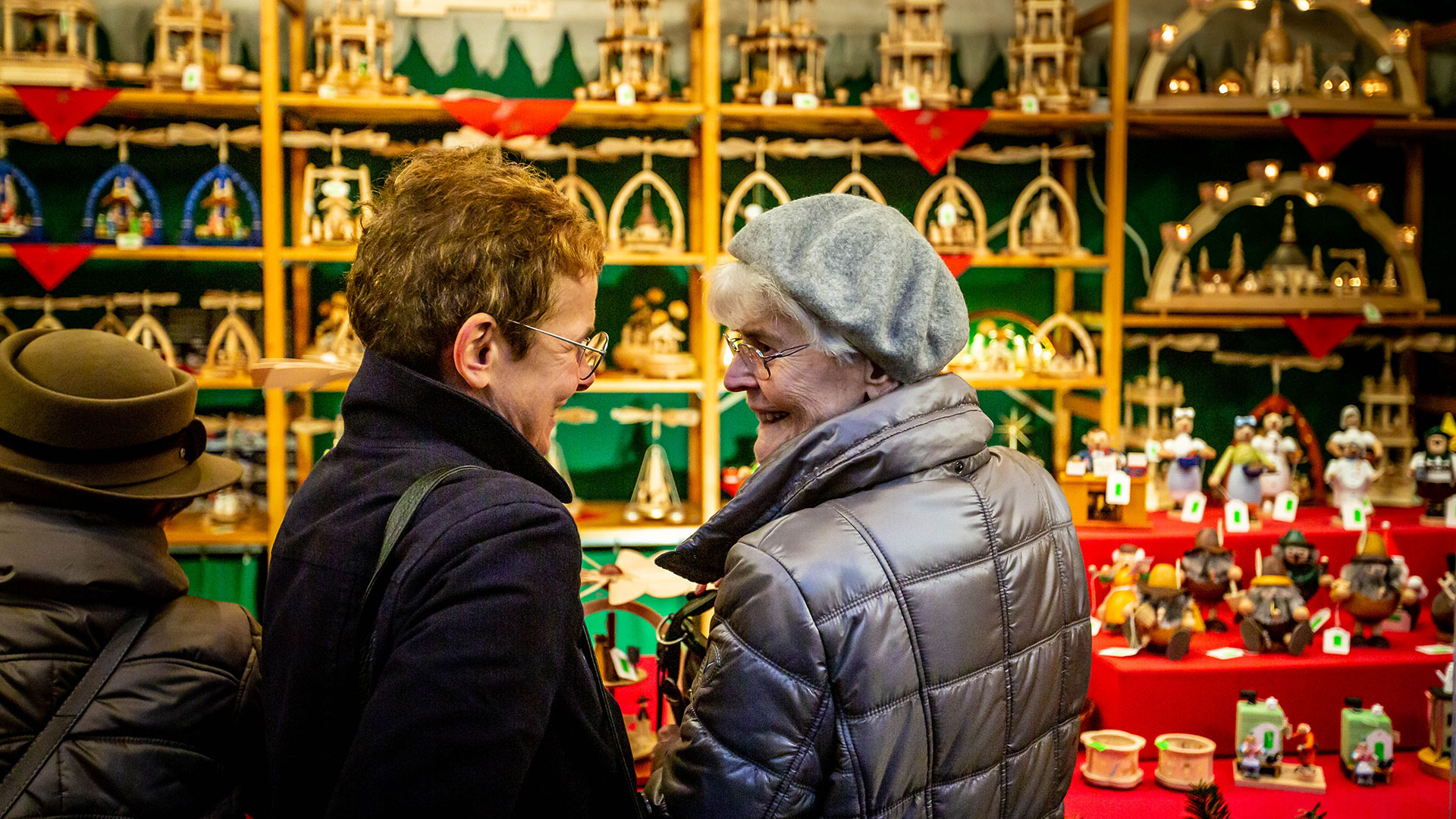
Two women admire the traditional woodworking art from the Ergebirge region of lower Saxony in Germany. The pyramids, candle arches, and smoking men are the most famous. These finely crafted pieces can be seen at Christmas markets throughout Europe. Photo by Patrick Royals.
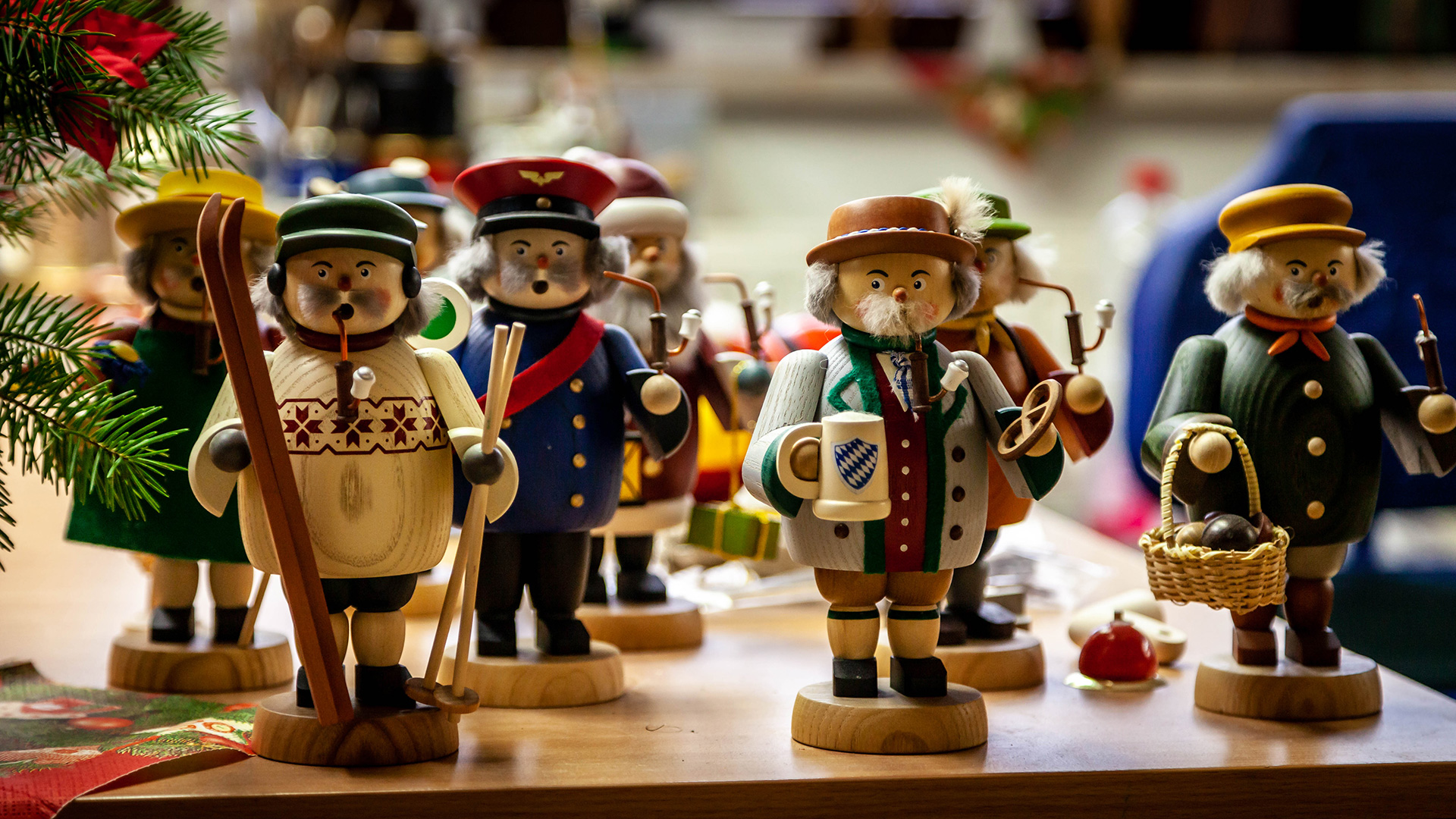
Räuchermännchen, or smoking men, are small wooden figures representing mountain trademen. They are specific to the Erzgebirge region in lower Saxony in Germany. The little figures appear to smoke their pipes when incense is burned inside their hollow torsos. Photo by Patrick Royals.
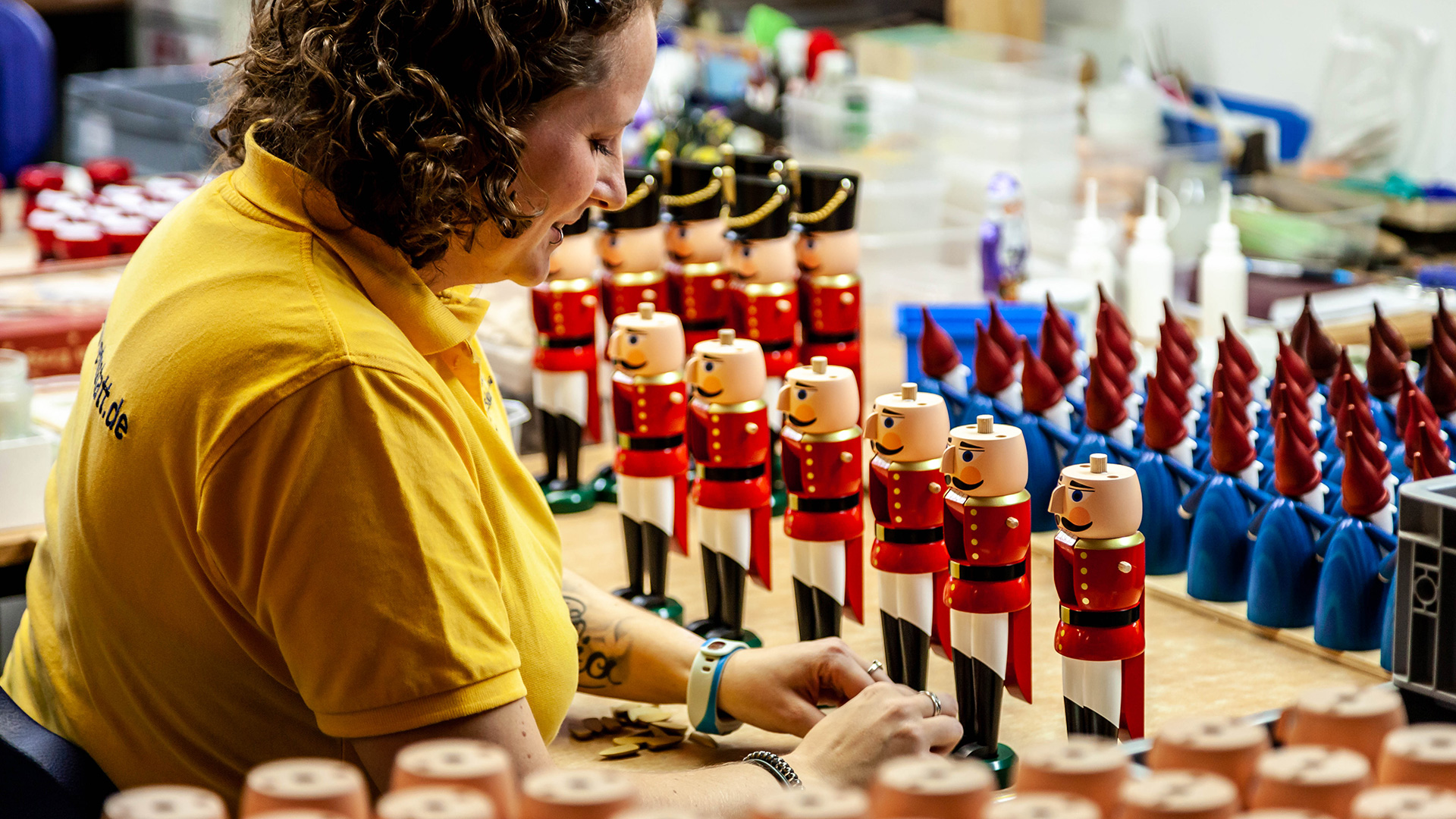
Nutcrackers start taking shape under a worker’s careful eye in an Erzgebirge woodworking workshop in Seiffen, Germany. Photo by Patrick Royals.
I could relate to the parents inspecting every wooden toy to find the right one for their toddler, much like I select toys for my own children. And I remembered the friends I miss from home as I watched groups gather around the tall market tables, each person clinging to a warm cup of punch, laughing and smiling as they enjoyed themselves in spite of the cold.
Laughter sounds the same in any language.
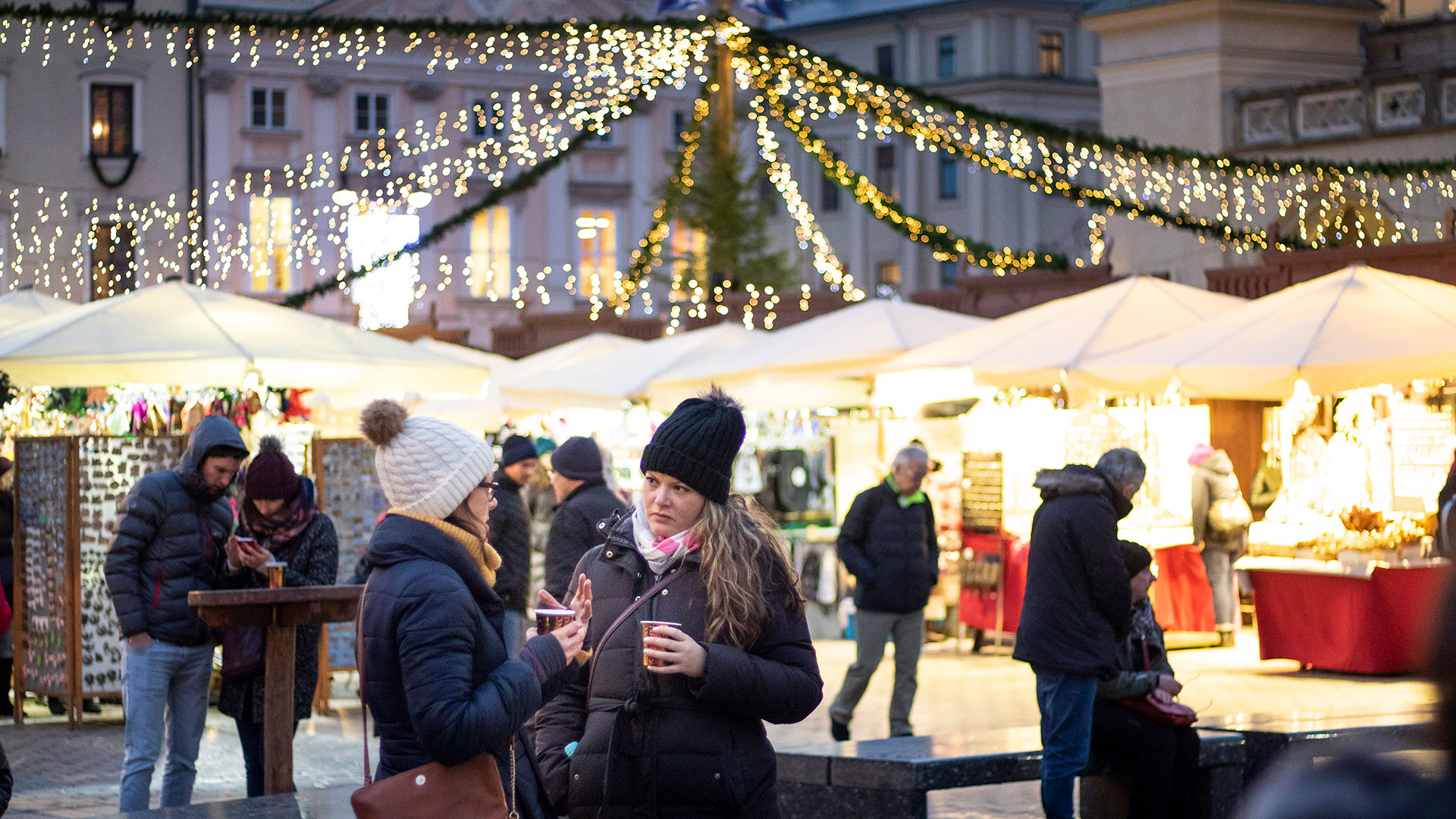
Women meet at a market in Kraków, Poland. December in Poland is often a snowy, cold month. But the bitter temperatures don’t deter locals who visit the market regularly. Photo by Kelvin Joseph.
When visiting a Christmas market, I’m reminded that we are all loved by God and, because of God’s love, Christmas is for us. Christmas represents the Savior coming to earth. It reminds us of God’s promises kept, our debt of sin being paid, and the miracle of Emmanuel—that God came to be with us (Matt. 1:23).
No matter the language or the location, the hope of Christmas answers the longing for hope in every human soul. People may be drawn to Christmas markets for any number of reasons, but the unity, peace, and love that I found while at the market could be what keeps people coming back again and again. I believe these qualities reflect the glory of Christ. The holiday that represents the birth of Christ can’t help but exude God’s good character. When people ask themselves what makes Christmas so special, Christ should be the answer to their question.
In Psalm 19:1, the Bible tells us that the heavens declare God’s glory and the skies give testimony to his power and love. If God uses nature to declare his glory, surely he can use a Christmas market as well.
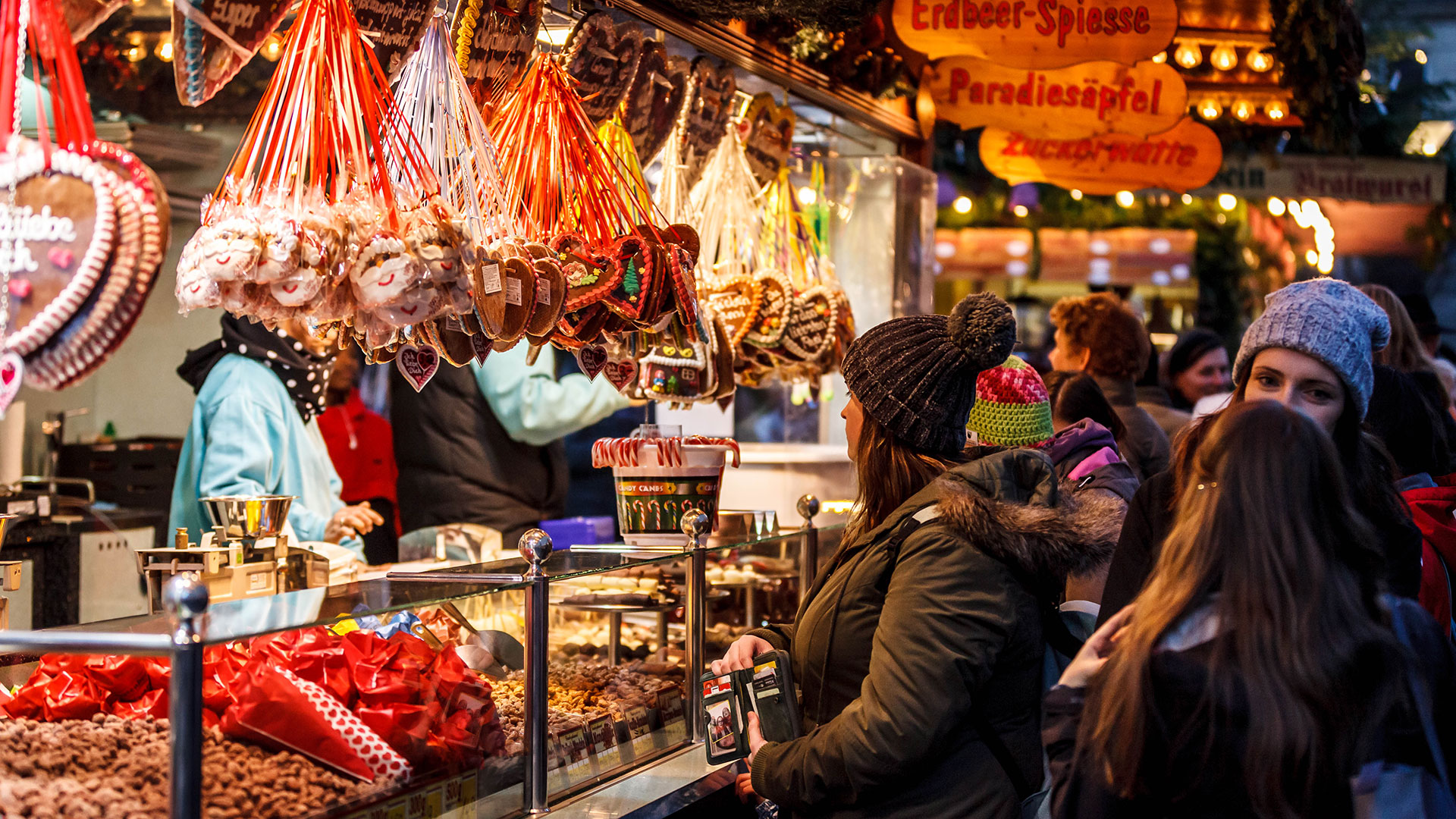
Lebkuchen is a type of spicy cookie resembling gingerbread that can be found at German Christmas markets during Christmas. They commonly have sweet or funny inscriptions written on them with icing. Photo by Patrick Royals.
Oh Come, Oh Come, Emmanuel
At Christmas, many people set aside conflict and choose forgiveness, they try to look past the disappointments of the past year and hope with anticipation that the next year will be better, and they feel moments of satisfaction and contentment as they surround themselves with gifts that promise fulfillment for friends and family.
As followers of Christ, the hope of Christmas should be the hope that we feel all year. We’re called to live every day like it’s Christmas—joyously celebrating Emmanuel who lives in our hearts.
Every day we can experience Christ’s forgiveness and feel the Holy Spirit healing our hurts. We can live each day in the confident hope that Christ will work all things together for good (Rom. 8:28). And we consistently rest in the peace and contentment that can only be found while pursuing God’s will for our lives.
Many people think it’s the Christmas markets that generate the warm happiness that keeps people coming back year after year, but I suspect it’s really Christmas itself that creates an atmosphere of peace and hope. Even those who don’t follow Christ know that there’s something different about Christmas.
Samantha Conners is a writer for IMB. She serves in Europe with her husband and two daughters.
Patrick Royals lives in Austria with his wife and four children. He is passionate about observing cultures, either through photography, design, or church planting, in order to discover bridges to the gospel.

